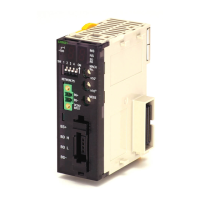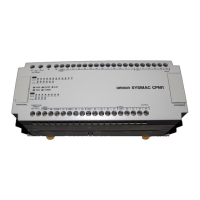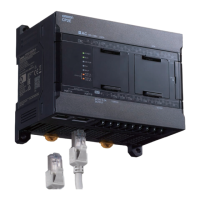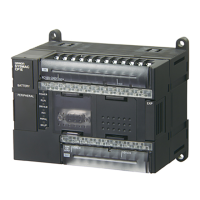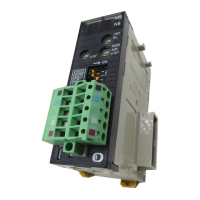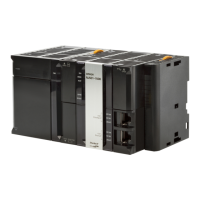177
3. Instructions
CS/CJ/NSJ Series Instructions Reference Manual (W474)
Sequence Output Instructions
3
OUTB
Hint
• Difference between SETB(532)/RSTB(533) and OUTB(534)
For OUTB(534), the operand bit is turned ON when the input condition turns ON and is turned OFF
when the input condition turns OFF. For SETB(532) and RSTB(533), the operand bit turns ON or
OFF, respectively, when the input condition turns ON and the operand bit does not change when the
input condition turns OFF.
• Immediate refreshing (!OUTB(534)) can be specified. An immediate refresh instruction updates the
status of the output terminal just after the instruction is executed on an output bit allocated to a Basic
Output Unit (but not for C200H Group 2 Multi-point Output Units or Basic Output Units on Slave
Racks), at the same time as it writes the status of the execution condition (power flow) to the
specified output bit in I/O memory.
Precautions
• When OUTB(534) is programmed between IL(002) and ILC(003), the specified bit will be turned OFF
if the program section is interlocked. (This is the same as an OUT instruction in an interlocked
program section.)
• When a word is specified for the bit number (N), only bits 00 to 03 of N are used. For example, if N
contains FFFA hex, OUTB(534) will control bit 10 of word D.
• If an indirect index address is used, OUTB(534) is executed even when the input condition turns OFF.
Be particularly careful when programming OUT using an indirect index register address.
Bit 10 of D0 is turned OFF when CIO 0.00 is OFF.
0.00
OUTB
D0
&10
MOVR
D100
IR0
Input condition
OUTB
,IR0
&15
When the input condition is OFF,
MOVR(560) is not executed, but
OUTB(534) is executed for the address
stored in the index register.
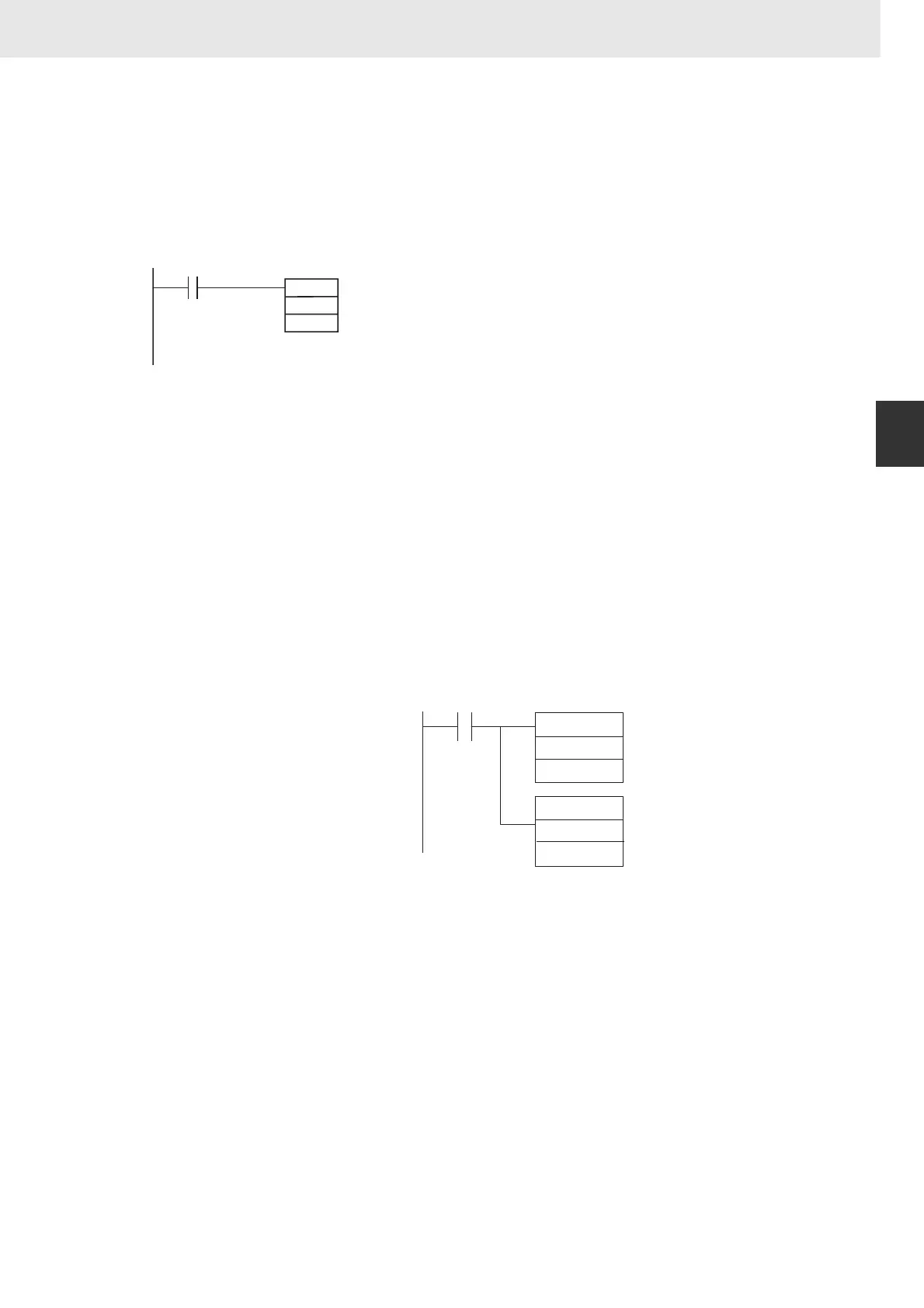